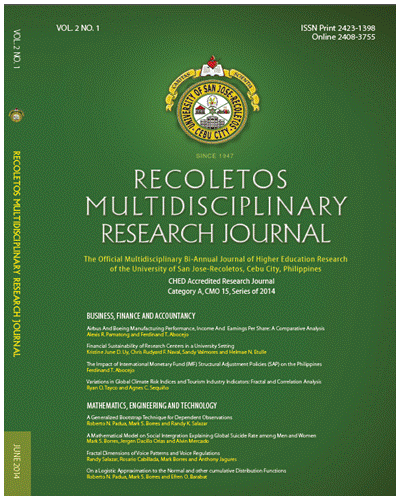Aspects of Climate Change Induced by Human Activities: Impact on Global Natural Disaster Mortality
DOI:
https://doi.org/10.32871/rmrj1402.01.17Keywords:
fossil fuel, renewable energy, CO2 emission, forest area, climate change, global warming, natural disaster mortalityAbstract
Some scientists believe that global warming and the consequent climate
change are inevitable results of slight deviations of the earth’s movement around its axis; a greater majority of scientists stipulate that a greater bulk of the reason for global warming and climate change is accounted for by human activities that destroy the natural environment. The present study looks into the chain of events that lead to natural disasters with specific focus on quantifying the human contribution to these catastrophes. The centroid regression approach identifies the categories of countries that contribute most to the world’s CO2 emissions and determines the relationship among natural resource depletion (% forest area) and CO2 emission and forest land area. The fitted curve states that the CO2 emissions increases as the square of the fossil fuel usage by the countries so that those nations, particularly those belonging to the high and very high HDI which are highly developed, contribute tremendously to the level of CO2 emissions across the globe. The impact of human exploitative activities on the accelerated CO2 accumulation in the atmosphere led to natural disasters spawned by rising global temperatures increasing natural disaster mortality.
References
IPCC, “Summary for Policymakersâ€, Direct Observations of Recent Climate Change, in IPCC AR4 WG1 2007.
IPCC, “Summary for Policymakersâ€, Understanding and Attributing Climate Change, in IPCC AR4 WG1 2007.
“Article 2â€, The United Nations Framework Convention on Climate Change (UNFCCC) (UNFCCC)
US Environmental Protection Agency (US EPA) (14 June 2012), Climate Change Science Overview, US EPA, Click on the image to open a pop-up that explains the differences between climate change and global
warming.
Herring, D. (March 6, 2012). “ClimateWatch Magazine » Global Temperature Projectionsâ€. NOAA Climate Portal.
Solomon, S., et al. (January 28, 2009). “Irreversible climate change due to carbon dioxide emissionsâ€. Proceedings of the National Academy of
Sciences of the United States of America (PNAS) (US National Academy of Sciences) 106 (6): 1704.
Maarten K. Van Aalst (2006) The impacts of climate change on the risk of natural disasters. (Disasters, Vol. 30, 1, pp.5-18)
Downloads
Published
How to Cite
Issue
Section
License
Copyright of the Journal belongs to the University of San Jose-Recoletos


